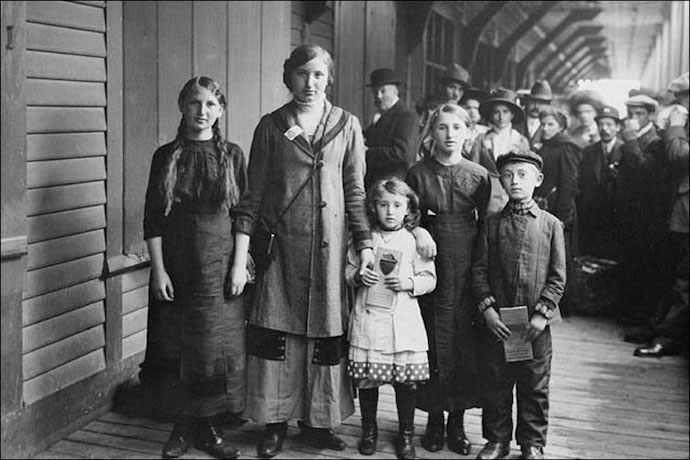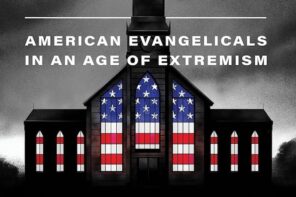Under Trump’s presidency there has been a rise in high profile anti-Jewish incidents. Perhaps because these incidents are often perpetrated by white supremacists who hold denigrating racialized views of Jews, writers have responded by asking whether white Jews in the U.S. are really white. A recent letter to The New York Times column on ethics likewise demonstrates how questions of Jewish whiteness do not only rely on contemporary anti-Jewishness.
In the letter an anonymous “fair-skinned” Jew asks why they should be expected to identify as “white” given the role of anti-Jewishness in their family’s history. The author of the column, Kwame Anthony Appiah, responds by pointing out that the social reality of race cannot be changed through disavowal and encourages white folks who want to break with the horrors of white supremacy to work in solidarity with others, and to use their white privilege to take it on. I agree with Appiah, although his conclusion that it can be useful to fight racism without skin in the game gives me pause. Not because it’s untrue, but because in my view Jews do have skin in the game in the fight against white supremacy.
The myth of a white Christian United States is linked to the history of colonization and Native genocide, forced enslavement of peoples from Western Africa, and the accompanying development of white identity in the U.S. In Stand Your Ground: Black Bodies and the Justice of God, Kelly Brown Douglas explains that the nation’s founding centered on an “Anglo-Saxon myth” of white racial superiority and the creation of a culture of whiteness to protect that identity. Of course, European immigrants to the U.S. were not all of Anglo-Saxon heritage, so to be white became a close enough approximation, and whiteness became the standard measure for access to rights and privileges.
While Douglas’s work doesn’t primarily address Jews, it illuminates how white Jews in the U.S. today can both be socially understood as “white,” and therefore privileged in related ways, and the objects of white supremacist hate because they fall outside of the myth of Anglo-Saxon, or white Christian, exceptional superiority. In white supremacist ideology in the U.S., white, Christian, and “American” are inextricably linked.
The construction of identities in the U.S.
The settler-colonial white supremacist framework that developed in the founding of the U.S. formulated “proper” citizens not only as white (especially in contrast to enslaved Africans and Indigenous peoples), but also as men, Christian (sometimes expressed simply as “moral”), able-bodied, and normative regarding sexuality and gender. The categories of race, gender, sexuality, religion, and ability weren’t and aren’t simply categories or metrics applied separately in order to assess claims to citizenship or humanity, but are interconnected and mutually reinforcing.
For example, constructions of both Blackness and Indigeneity as nonnormative identities have involved depicting Black and Indigenous people as disabled, possessing “deviant” gender and/or sexuality, and/or as immoral, heathens, or non-Christian “Others” incapable of being converted, and therefore deemed disposable. The colonies, and later the nation, embodied the dominant white supremacist perspective of colonizers, in which Native peoples were framed as necessary to eradicate, and Black people were framed as necessary subordinates, making it possible for white people and whiteness to thrive.
White Jews in the U.S.
Colonial Jews were small in number, and their experiences were mixed. While some experienced upward economic mobility, they faced limitations in terms of rights and access. However, Jews were not alone in facing discrimination. Importantly, debates over whether Jews (and other white religious “Others”) would be given rights primarily appear to have engaged with religious freedom. Though some have described white Jews as “becoming white” in the mid-20th century, evidence of the colonial-era focus on Jews as a religious (rather than racial) “Other” and the chasm between their lives and those of Native Americans and enslaved Africans demonstrates the longevity of whiteness among white Jews in the U.S. As Hasia Diner writes in The Jews of the United States, 1654 to 2000,
Jews were white. While during [the 19th] century Judaism would at times be regarded as alien to the Christian core of American culture, and Jewish people would be stigmatized for what many considered essential racial traits… their rights, as white men, to be part of the polity never came into serious question…
David S. Koffman has also documented how the upward economic mobility of white Jews in the Western U.S. from the 1850s onward was often made possible through commodification of Native culture and participation in settler-colonialism. Generally speaking, Jews—like other non-colonized and non-enslaved peoples of the time—had the ability to participate in and benefit from a capitalist economy primarily built upon economic exploitation of Africans, Native peoples, and the environment.
While these circumstances benefited white Jews, they were not exempt from the effects of racist science. Nineteenth century racist science, which purported to provide physical evidence for the inferiority or superiority of peoples, was influential in shaping normative ideologies of belonging in the U.S. and political policy. In Living in the Shadow of the Cross: Understanding and Resisting the Power and Privilege of Christian Hegemony, Paul Kivel explains that “late 19th and 20th century immigration policy focused on turning away those who were abnormal or of ‘inferior stock’ including those with physical and mental disabilities as well as homosexuals.” Race and religion were coded into this exclusion, with non-white and non-Christian persons likewise considered undesirable.
In a 2017 opinion piece for The Hill, historian Rebecca Erbelding explains that the “laws of 1921 and 1924, written by eugenicists and cheered by white supremacists, came a decade before the Nazi Party took power in Germany” and they stayed on the books through the 1930s and 40s. According to Erbelding, as anti-Jewish pogroms took place in Eastern Europe, U.S. policy makers approved immigration laws that included a last-minute decision by the Senate not to provide protection for those fleeing religious and political persecution.
Immigration laws were likewise enacted to limit and exclude immigrants who were not white, shaped by Nativist fears of “outsiders” who were frequently blamed for economic and social problems. Kivel explains that Western racist science was “set up to demonstrate the physical and thus the moral superiority of white, Western Christian men as represented by their bodies, and inevitably did so, even if the scientists involved had to manipulate or even fabricate the data.” However, this turn towards racism “justified” by the science of the body did not mean an abandonment of condemnation based on religion and morality. Rather, inferior race, now understood to be written on the body, was considered to be a sign of the immorality within.
Today, white nationalist mythology blames Jews for a variety of social and economic changes in the U.S. Central to this mythology is the idea that white people are being replaced by people of color through immigration, and that this replacement is orchestrated by Jews. These ideas proliferate in book form, on the internet, and in the rhetoric of President Trump and his administration.
The role of Jews is described in The Turner Diaries. Written in the 1970s, the book depicts an apocalyptic race war against a Jewish-controlled world government that culminates in the extermination of non-whites. In the white nationalist worldview, “white genocide” threatens to overrun the U.S. as a result of “overly inclusive” immigration policies that threaten to allow immigrants (who are coded as non-white) to replace white people.
Ben Lorber, writing for Political Research Associates,* explains that another book, The Culture of Critique, also significantly influenced white nationalist ideology. Written in 1998 by white supremacist Kevin MacDonald, the book argued that “U.S. Jewish political clout played a pivotal role in reversing the restrictive U.S. Immigration Act of 1924, [and] securing the 1965 immigration reforms that, over the coming decades, would drastically alter the demographic makeup of the country.” White Jews function in this mythology as the politically and economically powerful traitors behind inclusive immigration policy and who therefore undermine the white nation (constructed as Christian, patriarchal, hetero/cissexist, ableist, and so on).
Given this history, there’s a clear connection to recent accusations that George Soros, a progressive Jewish billionaire, funded the migrant caravan to the U.S. comprised of Central Americans fleeing violence and poverty. Likewise, the perpetrator of the shooting at Pittsburgh’s Tree of Life Synagogue used the synagogue’s support for the Hebrew Immigrant Aid Society, an organization that supports displaced people globally, as justification. He was motivated by white nationalist rhetoric that casts, especially Jewish, support for immigrants as facilitating “white genocide.”
In the U.S. today, the logics of settler-colonial white supremacy continue to have the most severe effects on those who are dominantly understood to be racially non-white. While white supremacists often do not consider white Jews to be white, their opinions are not dominant in the U.S. Likewise, historians such as Hasia Diner and David S. Koffman have documented the opportunities that late 19th-century white Jews in the U.S. had to access the economic, political, social, and legal benefits that came with whiteness.
Reexamining the whiteness of white U.S. Jews is necessary for Jewish communities’ meaningful participation in racial justice in the U.S. today. Such a reexamination makes clearer the ways in which white Jewish economic advancement in the U.S. has relied on complicity with, and internalization of, settler-colonial, anti-immigrant, and white supremacist norms. White Jewish complicity with, and internalization of, these oppressive norms is additionally concerning given that these are the same norms that endanger Jews.
It is my hope that in reckoning with this history white Jewish communities will sharpen their recognition of the benefits they continue to receive, that they will prioritize the needs of BIPOC Jews, and that they will engage in solidarity work with other marginalized communities given the clear links between settler-colonial white supremacy and anti-Jewish oppression.
*While RD is editorially independent, we are affiliated with Political Research Associates.





